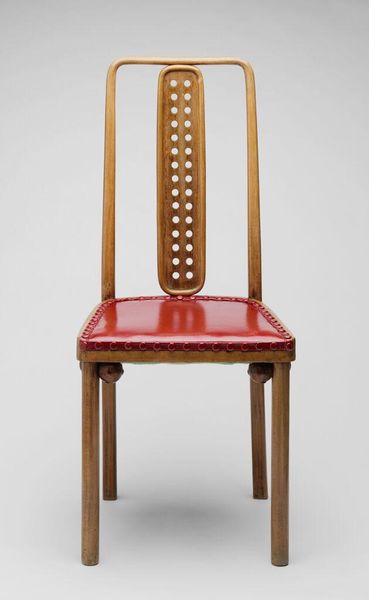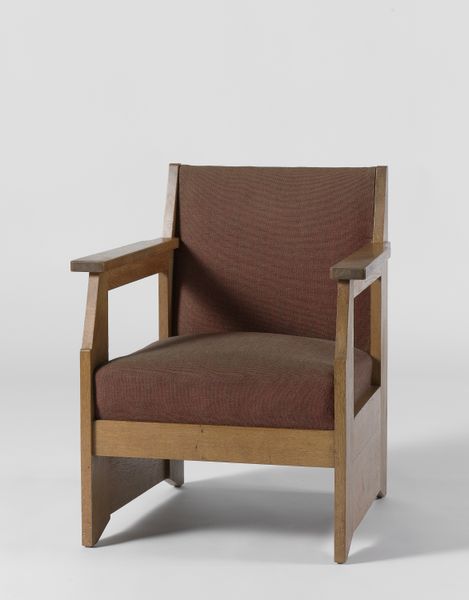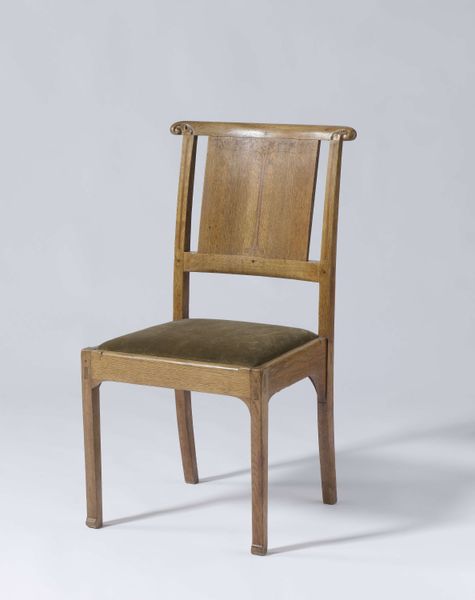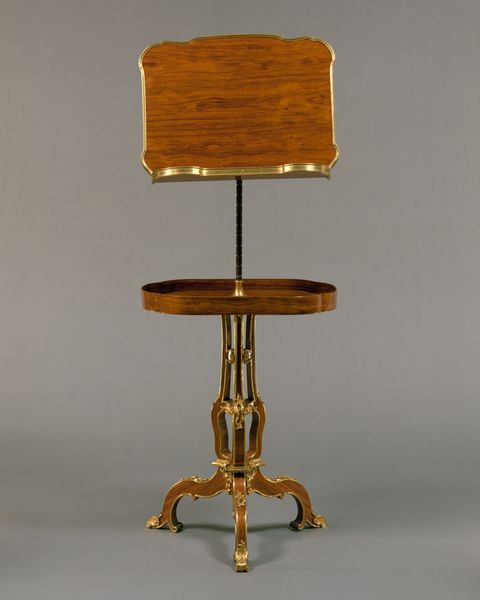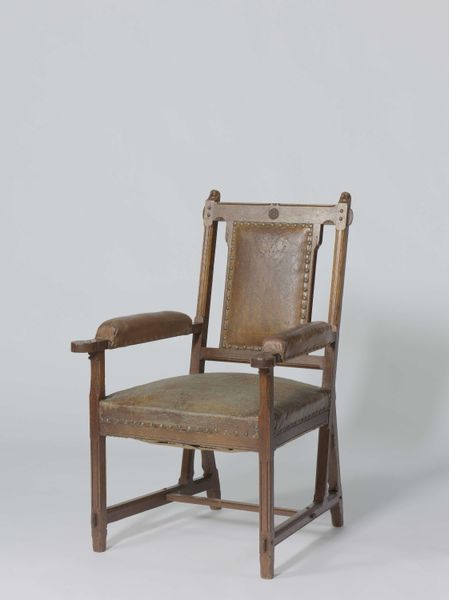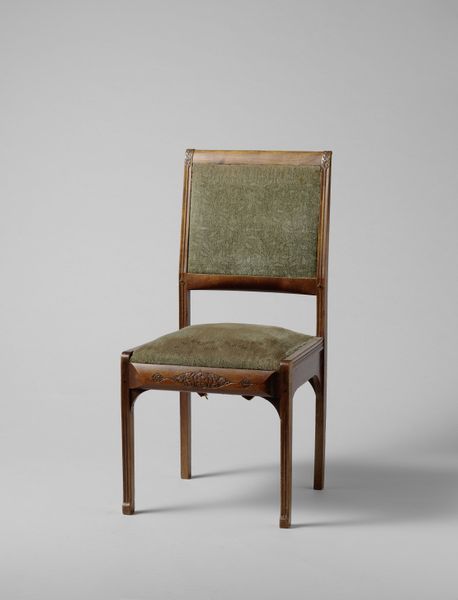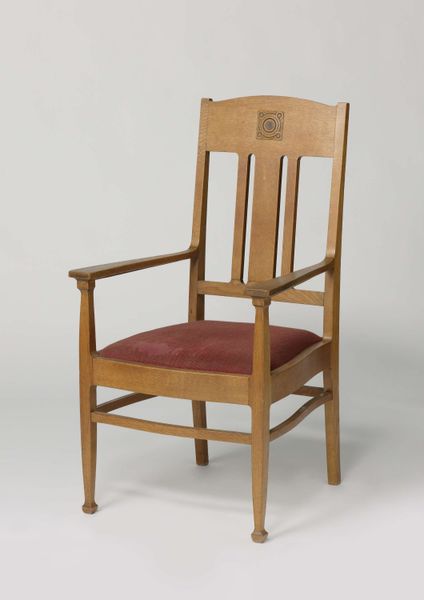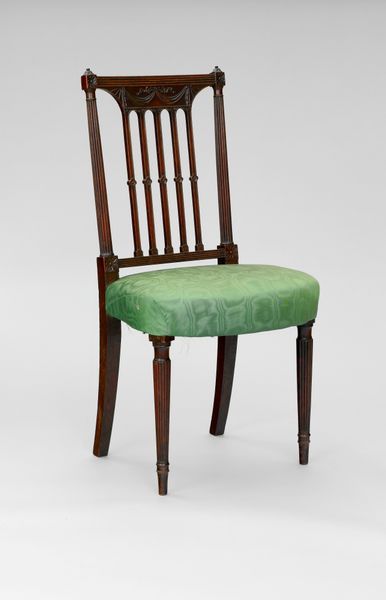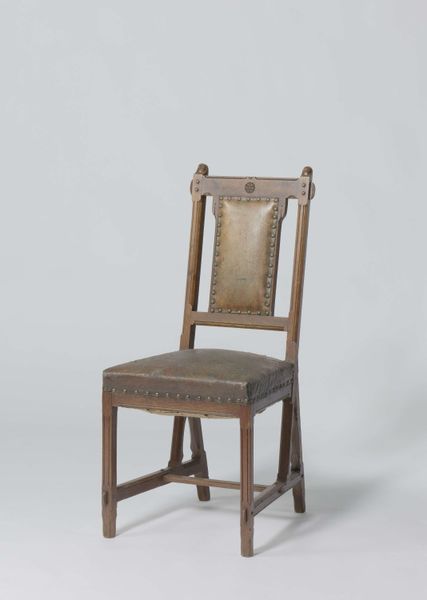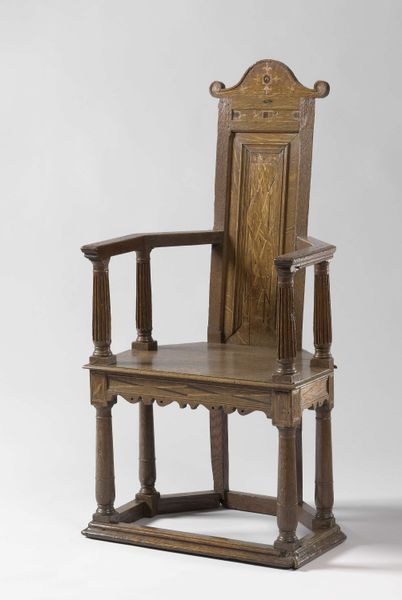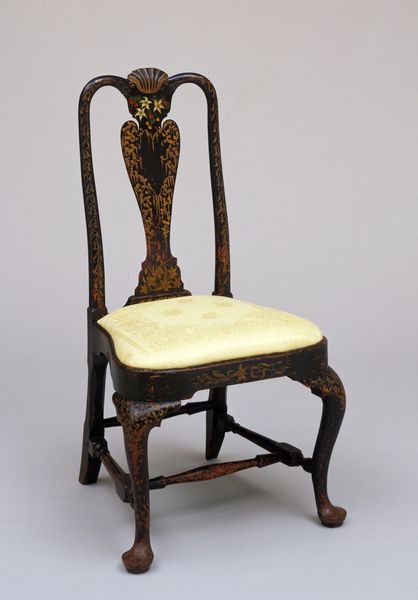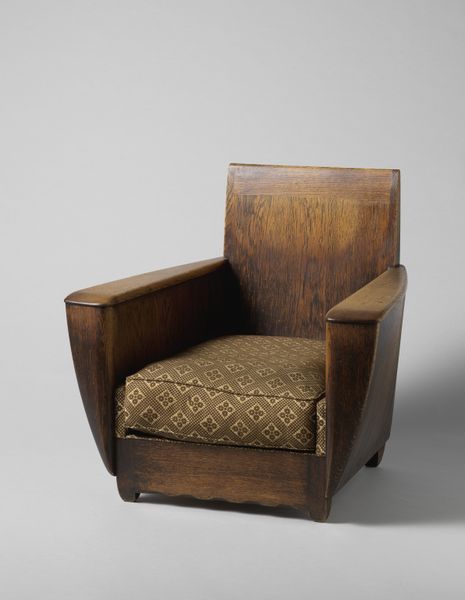
textile, wood
#
art-deco
#
furniture
#
textile
#
wood
Dimensions: height 128 cm, width 47 cm, depth 51 cm, height 50 cm, weight 14.8 kg
Copyright: Rijks Museum: Open Domain
Curator: Ah, here's a splendid example of Art Deco design. This is a chair from around 1925, "Stoel met hoge rug bekleed met oranje velours"— or, "Chair with a High Back Upholstered in Orange Velvet". It's the work of Klaas van den Berg. The materials combine wood and textiles in a rather striking way. Editor: It’s…severe, isn’t it? Almost unsettlingly upright. The high back in that dense orange velvet evokes a kind of royal discomfort to me. It seems less like a chair meant for relaxation and more like a throne for introspection, or maybe even penance. Curator: Precisely! That austerity aligns perfectly with the post-war sensibilities that influenced Art Deco. It’s a departure from the frivolous ornamentation of the pre-war era, leaning towards streamlined functionality while still retaining a sense of luxury through the choice of materials. Van den Berg understood the need to project a new image of Dutch society, modern but grounded. Editor: Orange, though, is such a powerful choice. It doesn't whisper, it commands. Is it a symbol of warmth and vitality against the cold wood structure, or perhaps an emblem of the dramatic social changes roiling society at the time? The elongated back almost resembles a flame... or perhaps, a stylized depiction of power. Curator: Yes, color held tremendous socio-political weight. Orange of course being intrinsically tied to the Netherlands. It might be seen as the artist and designer aligning themselves and their work within a very specific national context, and history. Beyond the shape it gives the chair context, linking it to traditional ideas and a sense of burgeoning Dutch identity. Editor: And consider the tactile impact – the contrast of smooth wood and plush velvet, both whispering promises and perhaps inaccessible power, because of the design’s obvious inflexibility and unyielding upright stance. Is it even a comfortable chair? Curator: Probably not! But comfort wasn't necessarily the primary goal. This piece is more about conveying status and embodying a modern aesthetic. It's a design statement, intended to be admired and, indeed, discussed. Editor: Ultimately, the piece asks how and what our furniture is, in both public and private contexts, because if nothing else it's made me think. Curator: Indeed, its rigidity compels reflection on the social function of furniture and the aspirations it embodies. Thank you for helping to make our visitors also reflect!
Comments
No comments
Be the first to comment and join the conversation on the ultimate creative platform.
